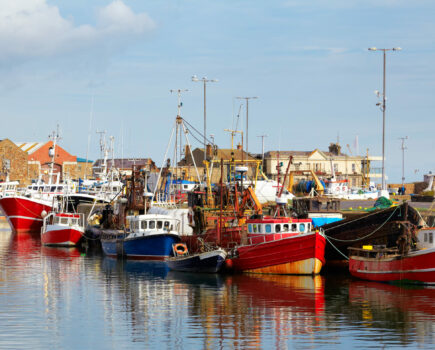A unique, citizen science study uses a Secchi disk and a free mobile phone app called Secchi to conduct a vital, global study of phytoplankton.
The Secchi Disk study (http://www.secchidisk.org) engages fishermen in a global, citizen science study of the phytoplankton, the plant-like cells that float at the sunlit sea surface from where they underpin the marine food chain to determine the abundance of fish and other sea creatures. The project aims to monitor the phytoplankton worldwide.
Canadian scientists reported in 2010 that the phytoplankton had declined globally by 40% since the 1950s due to climate change, so raising concerns for future, marine productivity and fisheries.
The Canadian study provoked controversy among other marine scientists as some thought they saw contrary results. Part of the controversy stems from a lack of data about the marine phytoplankton, and so this is why the citizen science Secchi Disk project was begun in February 2012.
In just three years, the Secchi Disk Study has become the world’s most extensive marine citizen science study and the project is now recruiting fishermen to use their boats as science platforms to collect data on the phytoplankton, according to plankton scientist and project leader Dr Richard Kirby.
“In order to take part in the project you need to make a simple piece of scientific equipment called a Secchi Disk and download the free Secchi app to your smartphone. A Secchi Disk is a weighted, 30cm diameter, white disc attached to a tape measure,” Dr Richard Kirby said, adding that it can be made from something as simple as a white, plastic bucket lid, or a piece of metal or wood.
To use a Secchi Disk, hold the tape measure and lower the disk vertically into the seawater (the weight is to ensure it sinks vertically), and note the depth below the surface at which the Secchi disk just disappears from sight. The depth at which the disk becomes invisible is called the Secchi Depth and it measures the clarity of the water. Full instructions are included in the free Secchi App.
Away from estuaries and shallows, the major determinant of water clarity is the phytoplankton, so the Secchi depth is a quick and simple way to measure the amount of phytoplankton. It is a tried and tested method that has been used by marine scientists since the method was developed by the Pope’s astronomer Pietro Angelo Secchi in 1865.
Dr Richard Kirby continued, “Use the free Secchi app to obtain the GPS location and to record the Secchi depth. A network connection isn’t required for this. The Secchi App stores the data on your phone and the project receives the data as soon as network connectivity is regained. You can follow your data on the interactive project map at the project website. It only takes a few minutes to take a Secchi Disk reading to help our understanding of the oceans’ biology to ensure a healthy phytoplankton to support fisheries for future generations,” he said.
“Many of the datasets that scientists rely upon today to tell us about long-term changes are ‘citizen science’ studies that were begun a few decades ago. Now we often look back and wish we had already started monitoring something. There’s no time like the present to start something for the future.”








